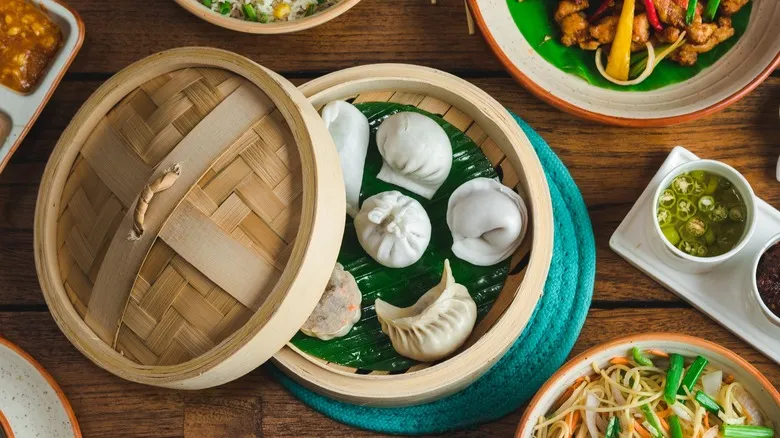What is a soup dumpling?
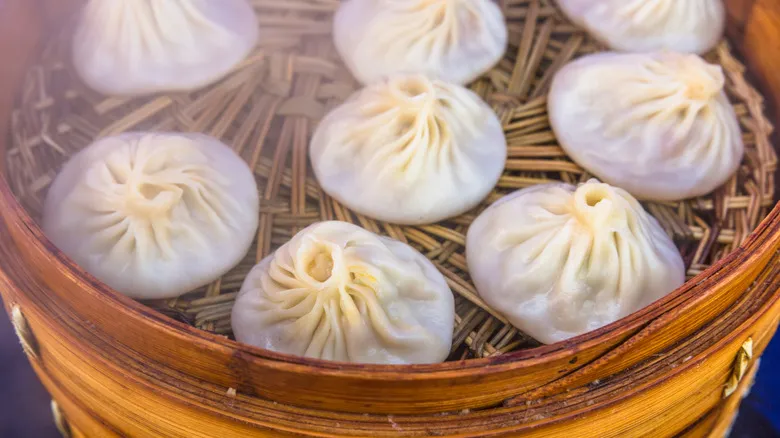
Soup dumplings are crafted by filling a dumpling wrapper, which is rolled to be slightly thicker in the center than at the edges, with a meat mixture. This is then combined with gelatin or a broth-based aspic that has been allowed to solidify. When steamed in a bamboo basket, the gelatin melts, resulting in a dumpling that releases a burst of warm soup with each bite.
The origins of soup dumplings are somewhat unclear. Many believe they were invented in Nanking, now a suburb of Shanghai, during the 19th century by a chef eager to set his dumplings apart from those of his competitors. These are referred to as "xiao long bao" (meaning "little basket buns"). Other accounts suggest that the history of soup dumplings dates back even further, evolving from guantang bao—larger, fist-sized dumplings that originated in Kaifeng, Henan Province during the Northern Song Dynasty (A.D. 960-1127). While in many regions of China today, soup dumplings are simply known as "tang bao" and come in various sizes and with different meats and broths, xiao long bao remain the most popular and are enjoyed worldwide.
What is a wonton?
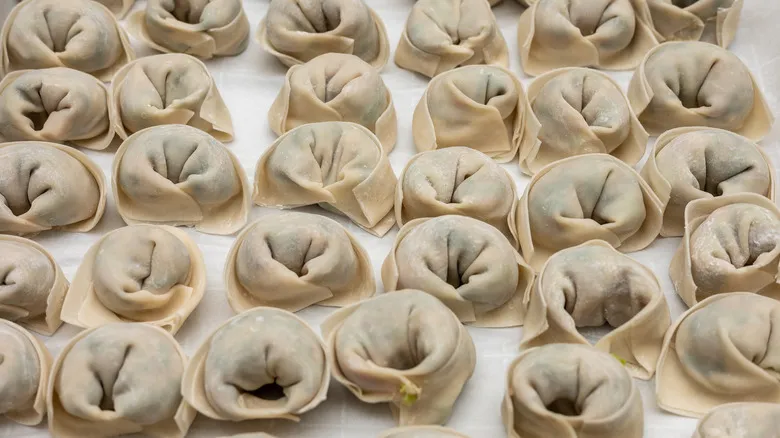
Wontons are a type of dumpling featuring a delicate flour wrapper filled with minced meat (often pork), shrimp, or vegetables, which can be either boiled or fried. Once cooked, the wrapper turns translucent, revealing the generous filling inside. They are commonly served in a light chicken broth garnished with scallions, bok choy, or both.
Wontons boast a rich history, likely predating that of soup dumplings, having originated in northern China over a millennium ago. The term "wonton" is derived from the Cantonese phrase meaning "swallowing a cloud." In particular, Sichuan wontons are referred to as "ch?o sh?u," which translates to "crossed hands," alluding to the unique way the dumplings are folded.
There's a set of standards for soup dumplings
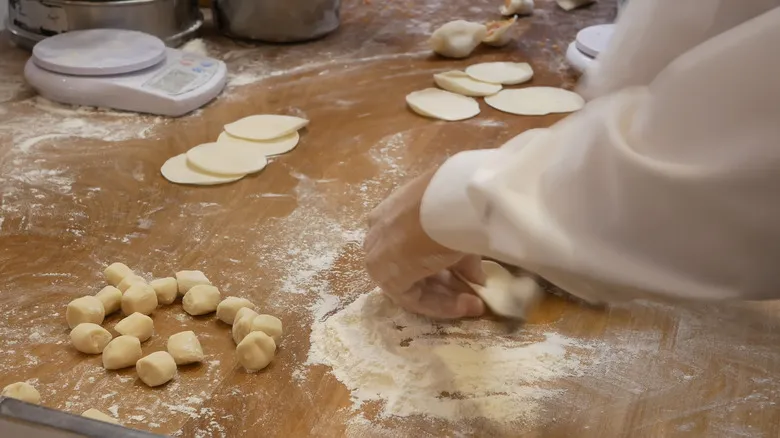
Xiao long bao are now crafted according to a set of standards established by China's National Intangible Cultural Heritage in 2014. These guidelines specify that the wrappers must be 1.5 millimeters thick and weigh 8 grams, although many are still made at 5 grams. The filling should weigh 16 grams, and the top should be sealed with 18 folds. When steamed, the bao should measure 2.5 centimeters in diameter.
In contrast, wontons are prepared and served in various ways throughout the country. In Sichuan province, wontons are filled with pork and served in a spicy red chili broth. In coastal Guangzhou, they are stuffed with shrimp and served in a clear fish soup. Cantonese wontons are often stir-fried and accompanied by a soup with added noodles. In Jiangsu province, thinly wrapped bubble wontons that burst in the mouth are enjoyed with morning tea. Meanwhile, in Qingdao, Shandong province, wontons are a popular late-night snack.
There's a right way to eat soup dumplings
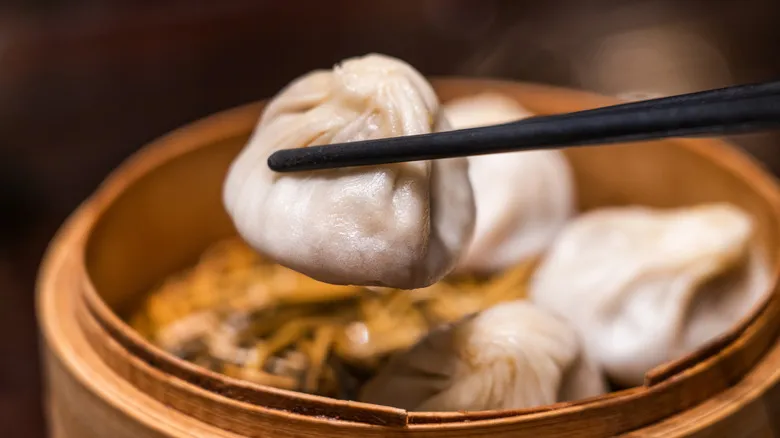
Soup dumplings have a specific way they should be enjoyed. You'll quickly learn the incorrect method—grabbing one with chopsticks and taking a large bite—because it often results in a burnt mouth and broth spilling down your chin. The ideal approach—demonstrated in various videos—is to either hold the dumpling with chopsticks or place it on a Chinese flat-bottomed spoon. Gently nibble a small hole in the wrapper to let the broth flow into the spoon. You can then either sip the broth first or take a bite of the dumpling while sipping. Avoid using a fork to stab the dumpling, as this will likely cause all the soup to escape; mastering chopstick skills is essential.
These chopstick skills will also be useful for eating wontons. In addition to being served in soup, wontons can be fried, steamed, and paired with a range of dipping sauces. If you want to merge the two dishes, try this trick with Trader Joe's chicken soup dumplings: pour chicken broth over the dumplings and add ingredients like miso, soy sauce, or scallions. You'll love having soup dumplings in your soup!
Recommended
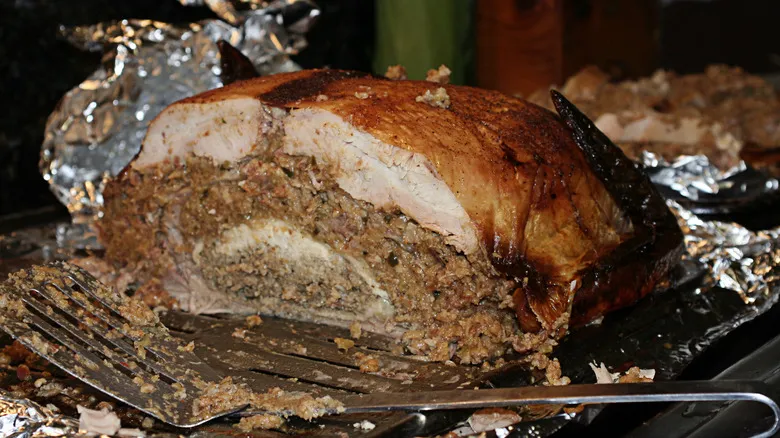
How The Turducken Became Thanksgiving's Most Unhinged Dish

How Hot Dogs Made It To Space

The Complete Guide To American Hot Dog Styles
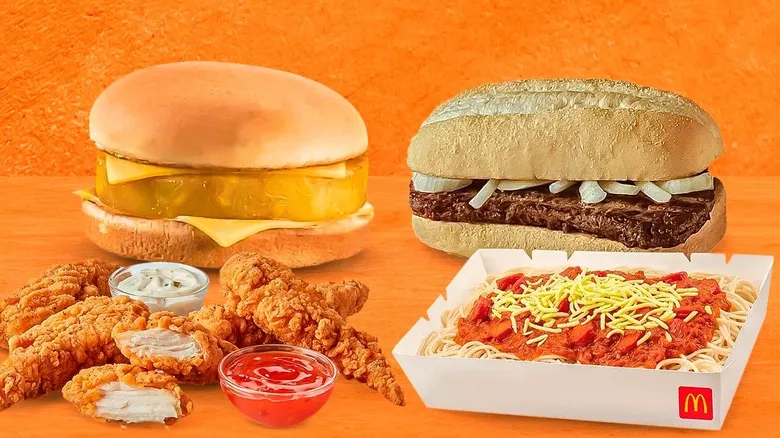
12 Discontinued McDonald's Menu Items We're Not Getting Back
Next up

